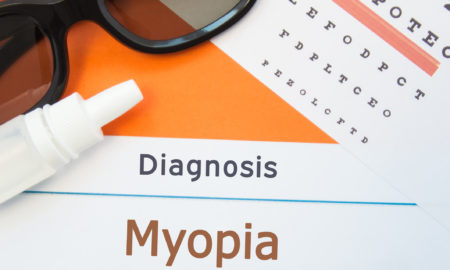Low Dose Atropine Eye Drops

A low concentration of atropine eye drops is another treatment to slow the progression of myopia.
Atropine eye drops are normally used to enlarge the pupil and relax the muscles in the eyes that help you focus for near tasks. Typically, atropine is used in concentrations of 0.5% to 1%. However, the concentrations used for myopia management are 0.01% or slightly higher. Therefore, side effects like light sensitivity or blurred near vision are minimal to none in most children. These drops are used daily at bedtime and are easy to incorporate into the daily routine because parents can apply the drops.
- LAMP Study [PDF]
- LAMP Study Phase 2 [PDF]
